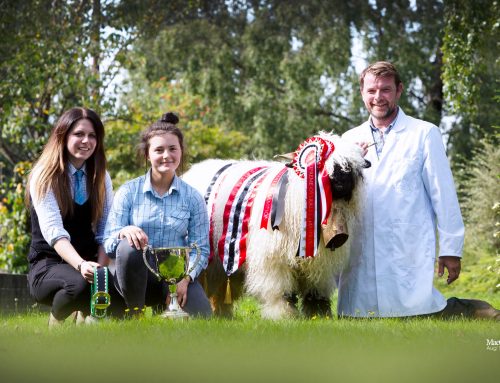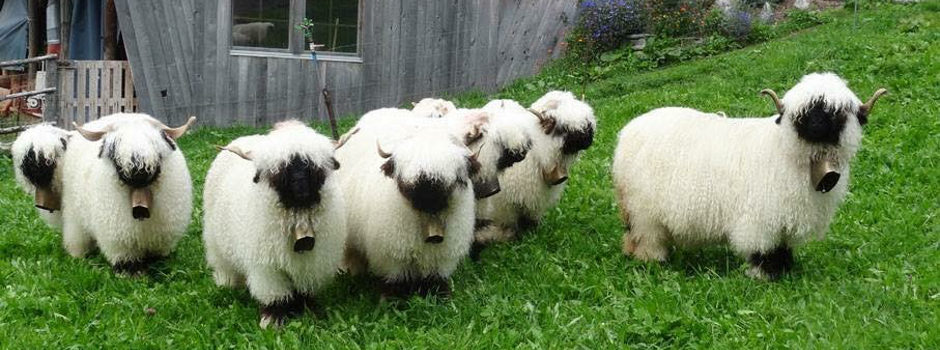
We have had a few new breeders ask about weaning, castrating and general information about managing their sheep as a result we have shared a series of educational posts to address these topics, for specific questions we advise you to speak to your local veterinary partner.
Ideal Age to Start Breeding
The Swiss Society advise that the best age to start breeding from Valais Blacknose Ewes is at about 18 months at which point the animal is mature enough to cope with both pregnancy and labour. As ewes need time to recondition post lambing its vital to condition score at weaning, or at the very latest eight weeks before tupping. Ideally your ewes should be lambing naturally once a year for best results.
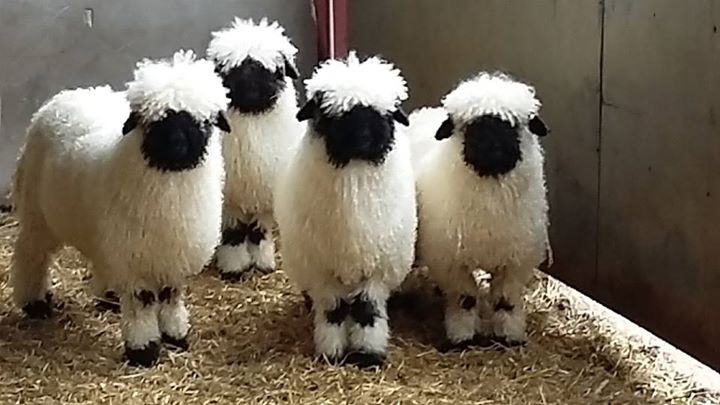
To Castrate or not to Castrate?
We would advise castrating any ram lamb who doesn’t comply with the breed standard, we want to breed the best we can in this country and also stay true to the Swiss breeding standard so making sure the rams used are correctly marked and shaped is paramount. See below link for the DEFRA castration management guidelines: http://adlib.everysite.co.uk/adlib/defra/content.aspx?doc=4154&id=4175
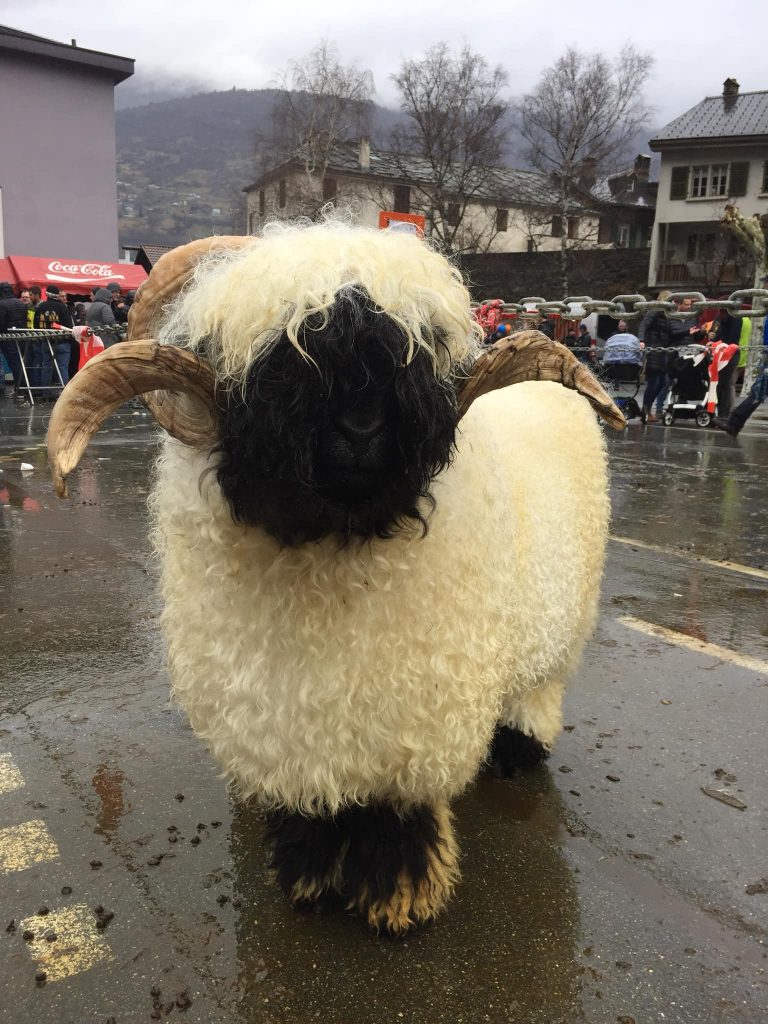
Immunising your flock
It’s highly recommended that you immunise your flock to manage mortality rates. Heptavac-P Plus is an injectable immunisation which reduces mortality in sheep and is used in the control of pasteurellosis pneumonia and clostridial diseases in sheep such as lamb dysentery, pulpy kidney, struck, tetanus, braxy, blackleg and black disease. Lambs should receive their first clostridal vaccination when they are approximately 6-8 weeks of age, followed by a booster 4 weeks later. The re-vaccination scheme recommends the administration of booster injections at intervals of no more than 12 months. In adult breeding ewes these yearly booster injections should be given 4-6 weeks prior to lambing. For further reading please refer to the MSD Animal Health Page: https://www.msd-animal-health.co.uk/binaries/Pasturella_and_Clostridial_disease_vaccination_tcm80-185585.pdf?fbclid=IwAR02ziq0RXKEpJmlS8UcrZ-sjjBTwvu2ZZEh8l3PSy_FRM0VqJ-Z2TqiLjUP
Lamb Weaning
The timing of weaning is dictated by the development of the lamb’s rumen – wean too early and the animal will be unable to digest pasture or other feeds. Even when the rumen is sufficiently developed, withdrawing nutrients dese-milk could affect lamb growth. As animals age, their efficiency at converting feed into growth decreases, therefore young lambs must have the best grass or feed to replace declining milk supply. We would advise weaning lambs at about 4 months old, or slightly later for lambs born late in the year that won’t have access to fresh spring grass.P
Fly-Strike Is a killer
Don’t take any chances especially when sheep are in full fleece for showing during the Summer months. As soon as the weather starts to warm up take measures to protect your flock against fly strike. Particular areas to watch are around the sheep’s horns, their hooves, and around their rear ends. If you do spot any signs of fly strike (flies buzzing around and landing on a particular area of a sheep or if you can already see eggs and/or maggots) immediately clean and treat the infected area accordingly. Regular shearing and a preventative care plan will help in the management of fly strike.P
Shearing
Due to their longwool and fast growing fleeces Valais Blacknose Sheep require shearing twice a year for optimal health and wool quality. We find the best time for this is late February which coincides with show season and enables fleeces to achieve the minimum 10cm staple length that is required for competing, then again in late August. If particularly cold at the time of shearing you will need to house the sheep for a few weeks, also note that lambs should be shorn for the first time at around 6 months of age.
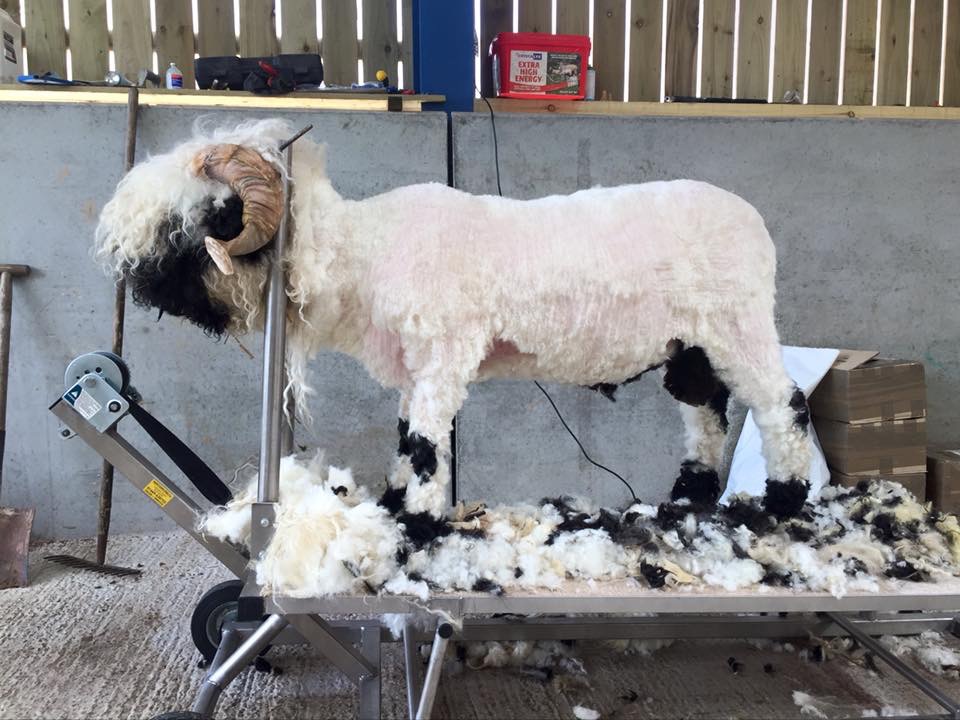
Hoof-care
The Healthy Hoof – Know what is ‘normal’
Knowing how a healthy foot should look will make it easier to recognise abnormalities and disease.
A normal foot has a hard wall of horn around two claws, each with a softer sole horn at the base. In healthy sheep, the interdigital skin between the claws is pale pink, dry, with a layer of fine hairs.
The sole horn is only 2-3mm thick and easily damaged by thorns or other sharp objects. The wall horn bears the sheep’s weight, so a normal foot has wall horn that extends beyond the sole.
In a healthy foot, the horn of both sole and wall is intact without smell, heat, softness or separated horn. If you’re Valais sheep is not lame and its feet are of normal shape leave well alone.
Wall horn grows at rate of about 5mm a month and the length of sheep feet varies naturally over the seasons. Over a year growth often matches wear so trimming is not necessary.
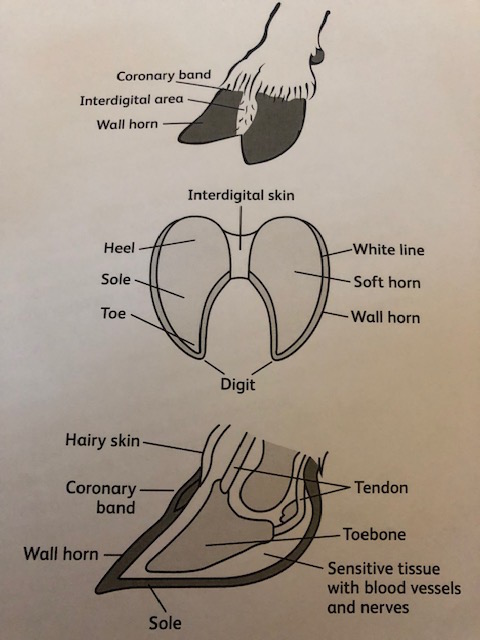
On some occasions the wall horn curls over the sole horn. This does not usually cause harm so foot trimming is unnecessary, unless the hoof horn is severely overgrown and the sheep is lame.
Common causes of foot problems:-
- Scald (interdigital dermatitis)
- Foot rot
- Shelly hoof
- White line (toe) abscesses
- Toe Granuloma (strawberry foot)
Valais Blacknose are quite prone to foot problems due to alot of wool between their toes we advise to hose feet out removing all debris remove wool between hooves and spray with antibiotic spray most common one used is Terramycin spray which you can get from your veterinary practice.
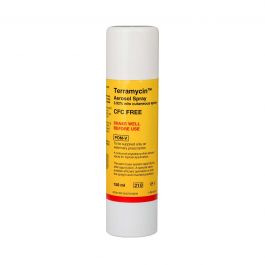
For more information of ‘Hoof Care’ please go to https://www.qmscotland.co.uk/sites/default/files/diagnosis_treatment_of_lameness_guide.pdf

